Optimizing your Customer Lifetime Value (CLV) with a mobile-first marketing strategy
 Chris Baldwin
Chris Baldwin
Jun 23, 2020
 Chris Baldwin
Chris Baldwin
Jun 23, 2020
 Chris Baldwin
Chris Baldwin
Jun 23, 2020
 Chris Baldwin
Chris Baldwin
Jun 23, 2020
Let’s face it. 80% of app users uninstall the app within three months. If you’re wondering whether a mobile-first engagement strategy is wise for your brand, remember that more than 3 billion people today have a smartphone at arm’s reach throughout the day—and 65% of all digital media time spent is driven by mobile, a whopping number indeed.
Take, for example, the Black Friday shopping season—in 2019 mobile devices accounted for $2.9 billion in sales. And that’s the scale of mobile-driven sales in just one special day.
Keep in mind that optimizing your CLV is a holistic concept—an umbrella that covers a wide spectrum. In this blog, we will cover some of the proven tactics that marketers can adapt to optimize their customer lifetime value with a mobile-first strategy.
Adopting a Mobile-First Approach for CLV
Wrapping Up—Leveraging Your Mobile Engagement Potential to Optimize Your Customer Lifetime Value
According to a popular mobile commerce study, sales from mobile devices accounted for $156 billion during 2017 in the U.S. and by 2021 mobile devices are expected to account for 72.9% of all eCommerce sales. Not only are more and more users accessing the web from a tablet or smartphone than a desktop, but they are also leaning to mobile as their primary shopping mode.
To capture this potential market and grab a slice of the pie, brands must cater to the needs of mobile customers now, more than ever before. Mobile is not a luxury afforded to the privileged few, it is the mode-of-life for half the world’s population.
So how can marketers get this right?
Your customers are constantly shifting between devices as their journey extends across mobile, social media, and messaging. Similarly, your engagement strategy has to adapt to cater to the wider spectrum.
Your goal should be to create a seamless experience for your customers across their physical and virtual journeys. But as digital channels become more integrated and the distinctions become blurrier, it becomes tricky to reach the right customer at the right time with the right message and on the right platform.
Here’s how you can roll
AI-powered customer journey builder tools provide a coherent way to build and deliver seamless experiences to your customers. Insider has its own version of this tool—Architect—a robust AI-powered customer journey builder that bridges customer journeys across email, web push, mobile, and ad channels. It also comes packed with powerful predictive segments that help you target the right users for an improved return on ad spend.
See it in action
Think of a visitor to a car manufacturer’s website who drops off before booking a test drive. It is in the brand’s best interest to bring the user back to complete the test-drive booking.
By using a powerful journey builder tool, the car manufacturer can now engage with the dropped-off customer across channels and devices, with web push notifications, emails, and Facebook ads. The AI capabilities of Architect also means that it can identify when to engage with a user and on what channels.
This way, brands can deliver contextually relevant experiences across channels and improve engagement with enhanced targeting.
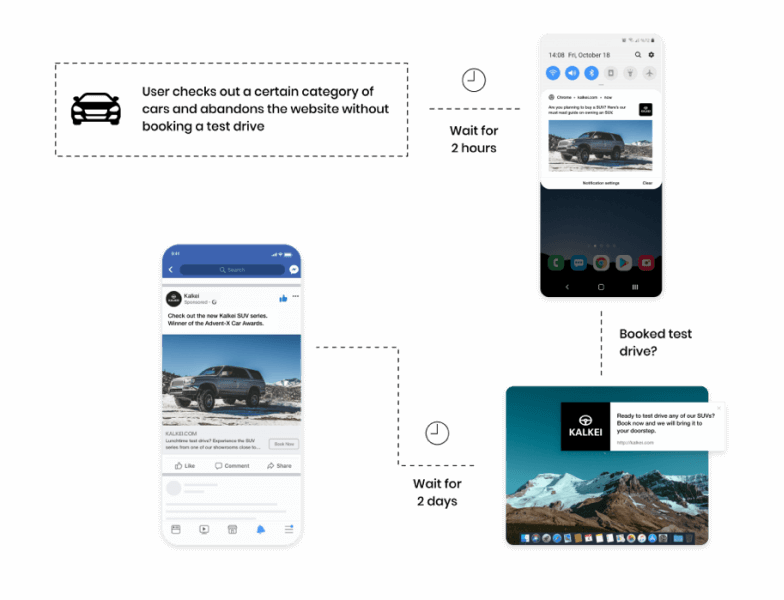
“Mobile” is an appealing channel to marketers because it is quick and timely in delivering engagement, but the mobile is also an intimate concept. So, while mobile marketing can help marketers quickly reach out to the right user at the right time with the right content, the brands that get it right understand the intimate and personal nature of mobile experiences and tweak their engagement accordingly.
While you may be able to reach your user with the promotional offer that you want to boost, it may not be what your customers want to see on the mobile device. Finding out ways to respect the personal space and preferences of your customers on mobile is vital to the success of your mobile engagement.
Emerging channels for messaging such as WhatsApp Business API and Messenger for Business are shaping out to be a real game-changer for how businesses can engage with their customers.
Here’s how you can roll
In order to get personal with your customer, you will need a platform that supports a messaging suite, supporting a wide range of messaging channels. Insider’s messaging suite supports web, email, WhatsApp and Facebook Messenger. The great thing about using a platform that has a messaging suite is knowing that the heavy lifting of integration and maintenance will be taken care of.
See it in action
Imagine a fashion retail brand has a customer with a history of closing in on discounts and price deals. The brand can reach out to the customer on their messenger app with highly relevant discounts and product deals.
Since the customer is mainly interested in discounts, this kind of messaging brings a personal element and promotes trust from the customer. You won’t have to worry about these messages being intrusive either, as they can only be done if the customer opts-in to receive these.
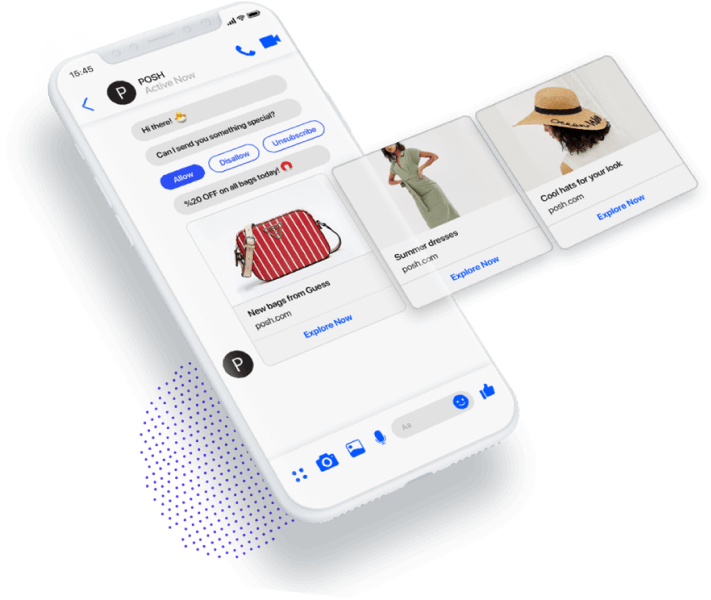
For both customers and brands, this is a win-win situation. New messaging channels are helping drive relevance and immediacy like never before.
Location-based marketing is an attractive way to boost customer engagement on mobile devices.
Marketers can leverage geofencing technology to send location-specific, contextual, and timely data-driven content to customers. Research has shown that 69% of users are happy to share their location information with apps if they are given relevant notifications.
Here’s how you can roll
A platform that supports geofencing as part of their push notification capabilities is what you’ll need to get started. Geofencing works by understanding the location of a user’s mobile device and sending relevant brand notifications to the device when it enters a geofenced area.
See it in action
Assuming a lifestyle retail brand has a visitor who’s been browning for a particular category of running shoes online but hasn’t made any purchases.
When this user enters a geofenced area where the brand has a retail outlet, the brand can send a push notification to the users’ mobile device informing them that their product of choice is in-stock at the nearest outlet. Brands can further incentivize shoppers with discounts if they make the purchase on the same day, and drive a sense of urgency.
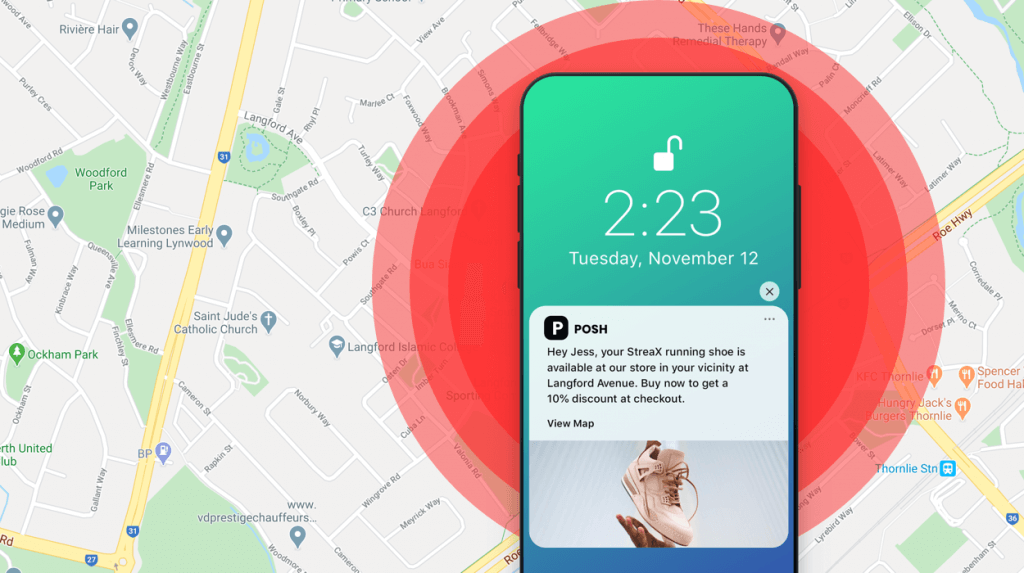
Promoting mobile-based incentives or loyalty programs increase customer engagement and bridge the gap between your brand’s online and physical presence. People love incentives, and when done right, they offer a good reason for your users to come back for more.
Starbucks is one brand that got this right. They’ve perfected the art of promoting loyalty with exclusive rewards to app customers. Apps make it easier to administer loyalty programs. Loyalty programs work by giving reward points to customers, such as 10 points for every coffee ordered and rewards a free coffee for every 100 points.
When customers see their points adding up they come to shop again. The need to gain points to reach a level where they can earn returns can be a great motivator and improves retention.
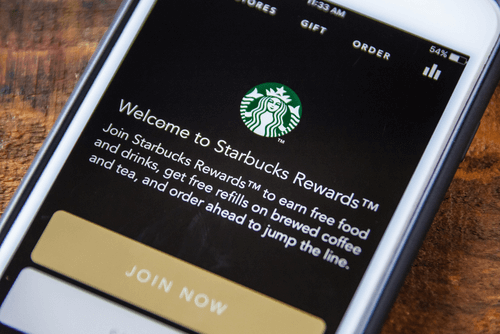
You can have the most eloquently crafted content, the best offer your customer could possibly get, but if you end up sending a mobile push notification at the wrong time, your love becomes a noise, a nuisance. Best case scenario, they ignore your message and mute notifications from your app; worst-case scenario, they uninstall your app.
The challenge facing all mobile marketers today, in this highly connected digital world, is getting the timing right. You might think that a particular customer is most receptive in the early morning, but it is always better to be sure than to be sorry.
Here’s how you can roll
A platform that supports scheduled push notifications based on user behavior is what you’ll need to get started. Being able to send automated and scheduled push notifications to reach users at their optimal time can change the way users engage with and perceive your messaging.
Insider has InTime as part of the push notifications suite which supports rich push notifications, carousels along with robust segmentation capabilities.
See it in action
Assuming a user Ellen has been browsing for products under the women’s accessories category but hasn’t made a purchase yet. You want to get her back to your website and get her to complete the purchase. A discount seems like a good way to go, but it only makes sense if you know the best time to reach her with this offer.
InTime takes care of this for you by identifying the most optimal time to reach Ellen. And improves your chances of getting her to engage with your push notification and complete her purchase.
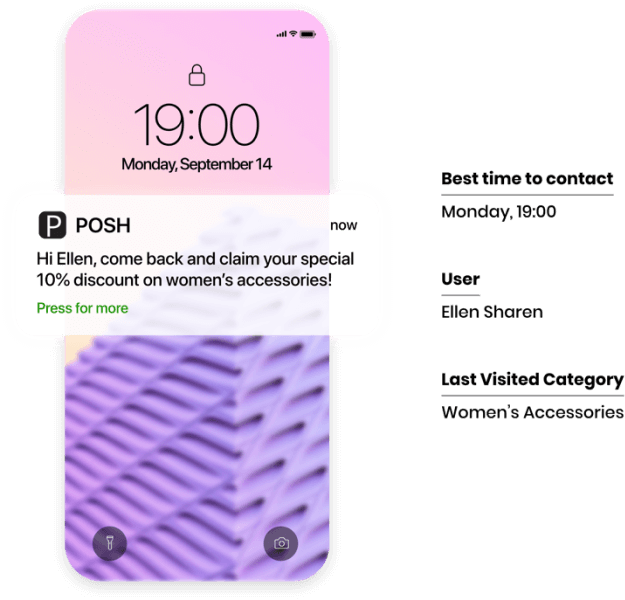
As the popular adage goes “out of sight, out of mind” and that’s a harsh reality to accept. But ever thought that — maybe — you don’t have to accept it at face value?
There’s no stopping the mobile-first customer and they are never far from their mobile devices. This presents marketers with a unique opportunity to remain within sight and continue engaging with the customer.
When done right, a robust mobile marketing strategy can go a long way in bolstering customer engagement and improving retention. Both of which are vital to creating a viable strategy for optimizing customer lifetime value.
As we’ve seen, customers today are increasingly moving towards a mobile-first lifestyle and eCommerce sales made from mobile devices have outdone the sales made from the desktop. Marketers can no longer afford to put mobile engagement on the backburner — it has to be a deliberate and scaled-up effort to effectively engage customers and retain them over their lifetime.
Mobile also offers the potential to engage with customers immediately and intimately, offering a unique opportunity to build trust and a long-term relationship unlike any other. To know more about customer lifetime value and the strategies that you can adopt to improve your CLV read the other articles in our blog.

Written by
Chris Baldwin
Chris is an award-winning marketing leader with more than 12 years experience in the marketing and customer experience space. As VP of Marketing, Brand and Communications, Chris is responsible for Insider's brand strategy, and overseeing the global marketing team. Fun fact: Chris recently attended a clay-making workshop to make his own coffee cup…let's just say that he shouldn't give up the day job just yet.